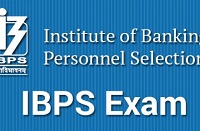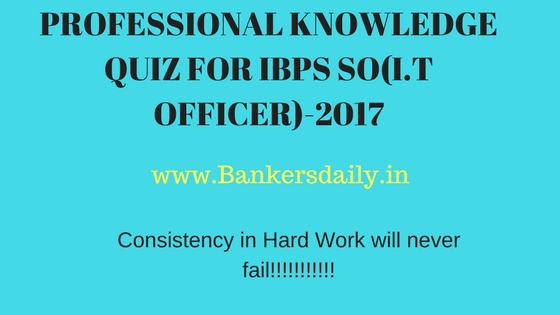Will there be a BANK MERGER ? – Bank of Baroda, Central Bank of India, IDBI Bank & Oriental Bank
Want to Become a Bank, Central / State Govt Officer in 2020?
Join the Most awarded Coaching Institute & Get your Dream Job


Now Prepare for Bank, SSC Exams from Home. Join Online Coure @ lowest fee
Lifetime validity Bank Exam Coaching | Bank PO / Clerk Coaching | Bank SO Exam Coaching | All-in-One SSC Exam Coaching | RRB Railway Exam Coaching | TNPSC Exam Coaching | KPSC Exam Coaching
Will there be a BANK MERGER ? – Bank of Baroda, Central Bank of India, IDBI Bank & Oriental Bank
Dear Banking Aspirants,
Everyone have questions in their mind and now more questions gets added to the list of Questions and out of that several questions have answers and many have a neutral or a long pending answer. Some of the major question are as follows :
1. Will there be a Merger of Banks in 2018 ?
2. Will Bank of Baroda , Central Bank of India, IDBI Bank & Oriental Bank be merged ?
3. What Acts are used while a Bank Merger is done ?
4. Will Insurance Companies be merged as said in the Budget ?
So some days back many leading news daily carried an article with the Heading, ” Banker Merger – Bank of Baroda , Oriental Bank , Central Bank of India and IDBI Bank ” and this provoked and spurred the questions further.
Nationalization of the Banks exercise were undertaken in 1971 under the regime of Indira Gandhi and after many years 5 Associate State Banks and Bhartiya Mahila Bank (BMB) were merged into a single entity on April 1, 2017. This merger catapulted the State Bank of India (SBI) which is India’s largest lender to among the top 50 banks in the world.
The banks which are merged to State Bank of India (SBI) are State Bank of Hyderabad (SBH) , State Bank of Mysore (SBM) , State Ban of Patiala (SBP), State Bank of Bikaner and Jaipur (SBBJ) , State Bank of Travancore (SBT) along with Bharatiya Mahila Bank (BMB). During the time of merger it was said that SBI’s market share will increase to 22% fro 17% and the total customer base of the State Bank of India (Merged entity) will be 37 Crores and with a branch network of 24,000 and with a total ATM strength of 59,000 across the whole country.
The Deposit base of the merged entity was predicted to be more than Rs.26 Lakh Crore and the advances level of Rs.18.50 Lakh Crore.
There should be a question as why Banks are merged and it needs a large answer as to why a merger happens and importantly who laid the seeds for the Merging of Banks.
This Bank Mergers were first ideated by Maidavolu Narasimham who was the 13th governor of Reserve Bank of India(RBI) in a seminal report on Banking reforms. The Narashimam committee was established under the former RBI Governor Maidavolu Narashimam in August, 1991 and it is mainly to look into the aspects of the Financial System of India. In acceptance of this committee , the government announced slew of reforms.
What did the Narashimam Committee Reported?
- Merger of Public Sector Banks to make them stronger.
- Envisaged a 3 – Tier Banking Structure with 3 Large banks with international presence at the top.
- 8 to 10 National Banks at 2n Tier and a larger number of regional local banks at the bottom.
Some of the recommendations of the Narashimam Committee II on banking sector reforms and merging of banks are provided below.
- Mergers between banks and between banks and DFIs and NBFCs need to be based on synergies and locational and business specific complimentarities of the concerned institutions and must obviously make sound commercial sense. Mergers of public sector banks should emanate from management of banks with Govt. as the common shareholder playing a supportive role. Such mergers, however, can be worthwhile if they lead to rationalisation of workforce and branch network; otherwise the mergers of public sector banks would tie down the managements with operational issues and distract attention from the real issue.
- It would be necessary to evolve policies aimed at “rightsizing” and redeployment of the surplus staff either by way of retraining them and giving them appropriate alternate employment or by introducing a VRS with appropriate incentives.
- This would necessitate the co-operation and understanding of the employees and towards this direction, managements should initiate discussions with the representatives of staff and would need to convince their employees about the intrinsic soundness of the idea, the competitive benefits that would accrue and the scope and potential for employees’ own professional advancement in a larger institution. Mergers should not be seen as a means of bailing out weak banks. Mergers between strong banks/FIs would make for greater economic and commercial sense and would be a case where the whole is greater than the sum of its parts and have a “force multiplier effect”.
Aspirants can find the total recommendations from the Banking reforms committee from the Reserve Bank of India website or from the link that is mentioned below.
Recommendations of Banking Reforms committee
Coming to the merger of the four banks , Bank of Baroda , Central Bank of India , Oriental Bank and IDBI Bank , these are just speculations as it is not confirmed yet. Recently RBI has approved license for Payment Bank and Smal Finance Banks which states that the Central Banking institution of India is trying to reach every place in the country and want to serve all the citizens.
The merger of the four banks were doing rounds since the combined loss of all these entities crossed Rs.21, 646.38 in total in the year ended March 31. If the plan of the merger of the bank goes through, the merged entity will become the second-largest bank in the country after State Bank of India, with combined assets of Rs.16.58 trillion.
Recently RBI (Reserve Bank of India) have barred Dena Bank from taking Fresh credit Exposure and also barred Dena Bank from recruiting staffs. Also additionally RBI has barred the State run Allahabad Bank from extending Fresh loans after Allahabad Bank fell short of minimum CAR (Capital Adequacy Ratio) requirement.
What is your view on Merging of Banks ? Will the merging helps in reducing the NPA of the banks ? Will the newly formed entity become the 2nd Largest entity in India ?
Mention your views in the comments section. We love to hear your views on the above questions. Have a deeper look on this topic as this is one of the important topics in the descriptive section in the forthcoming Exams.
Check the below videos to know more about the Banking Awareness Topics for the forthcoming exams like SBI PO , SBI CLERK , IBPS RRB Scale I, II , III Officer & IBPS RRB Office Assistant.






